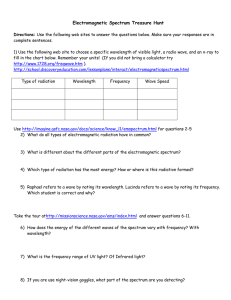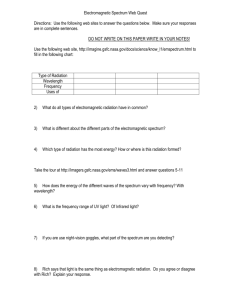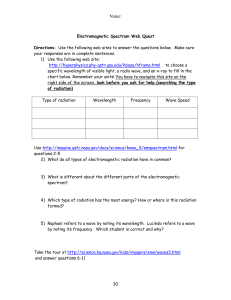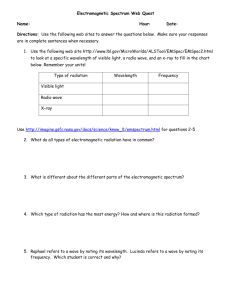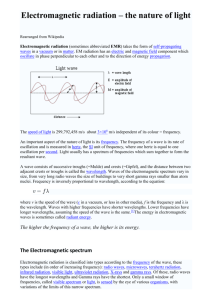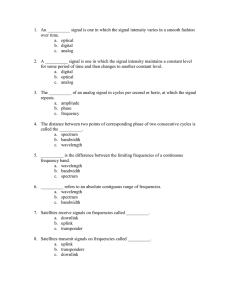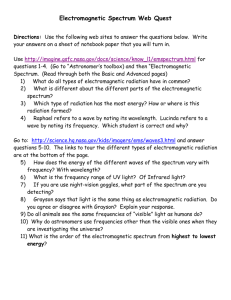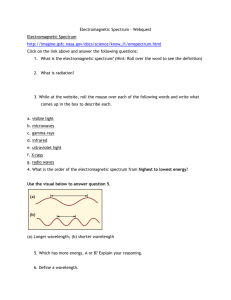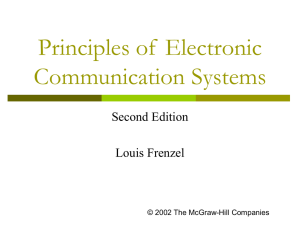Electromagnetic Spectrum Web Quest
advertisement
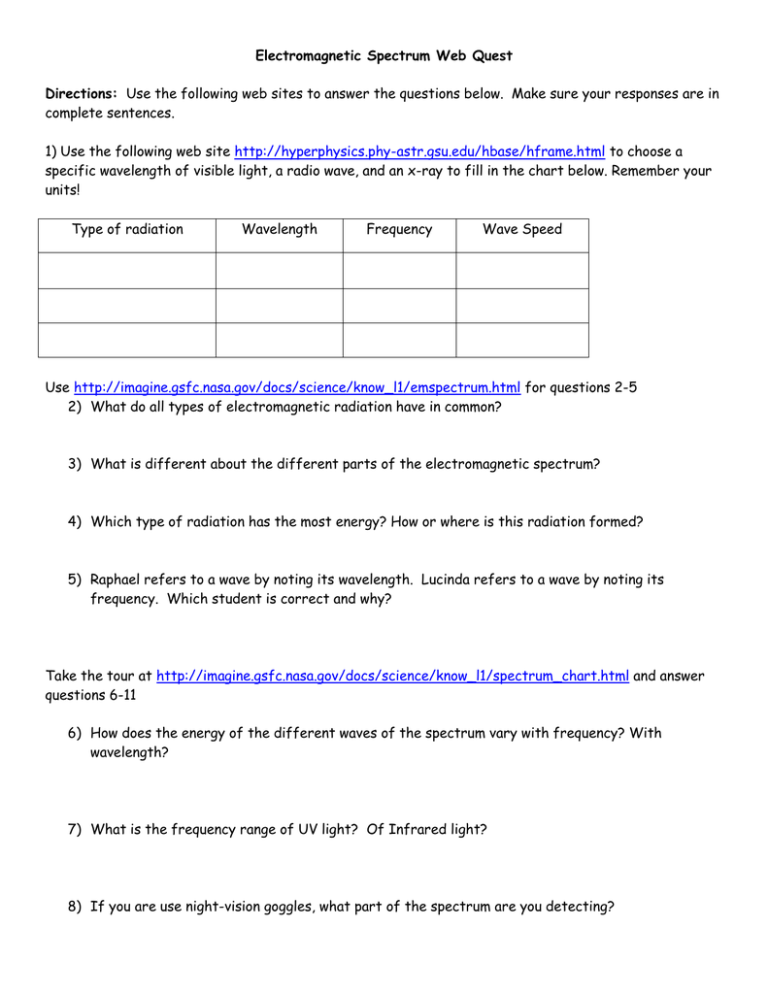
Electromagnetic Spectrum Web Quest Directions: Use the following web sites to answer the questions below. Make sure your responses are in complete sentences. 1) Use the following web site http://hyperphysics.phy-astr.gsu.edu/hbase/hframe.html to choose a specific wavelength of visible light, a radio wave, and an x-ray to fill in the chart below. Remember your units! Type of radiation Wavelength Frequency Wave Speed Use http://imagine.gsfc.nasa.gov/docs/science/know_l1/emspectrum.html for questions 2-5 2) What do all types of electromagnetic radiation have in common? 3) What is different about the different parts of the electromagnetic spectrum? 4) Which type of radiation has the most energy? How or where is this radiation formed? 5) Raphael refers to a wave by noting its wavelength. Lucinda refers to a wave by noting its frequency. Which student is correct and why? Take the tour at http://imagine.gsfc.nasa.gov/docs/science/know_l1/spectrum_chart.html and answer questions 6-11 6) How does the energy of the different waves of the spectrum vary with frequency? With wavelength? 7) What is the frequency range of UV light? Of Infrared light? 8) If you are use night-vision goggles, what part of the spectrum are you detecting? 9) Rich says that light is the same thing as electromagnetic radiation. Do you agree or disagree with Rich? Explain your response. 10) Do all animals see the same frequencies of “visible” light as humans do? Do all animals hear the same frequencies of sound as humans do? 11) Why do astronomers use frequencies other than the visible ones when they are investigating the universe? Use http://www.ntia.doc.gov/osmhome/allochrt.pdf to answer questions 12-14 12) What frequency range does the United States use for FM broadcasting? For AM broadcasting? 13) What frequency does television channel 7 broadcast at? 14) How large a band of frequencies does each television broadcasting channel get? Use http://www.qrg.northwestern.edu/projects/vss/docs/thermal/3-what-makes-em-radiation.html to answer the following (the general site http://www.qrg.northwestern.edu/projects/vss/docs/Communications/2-more-about-radio-waves.html can also be used on other questions) 15) Why do materials absorb some frequencies of electromagnetic radiation and not others? For Extra Credit, answer questions 16: 16) Why do waves with frequencies higher than visible light hurt us while those with lower frequencies do not affect us?
